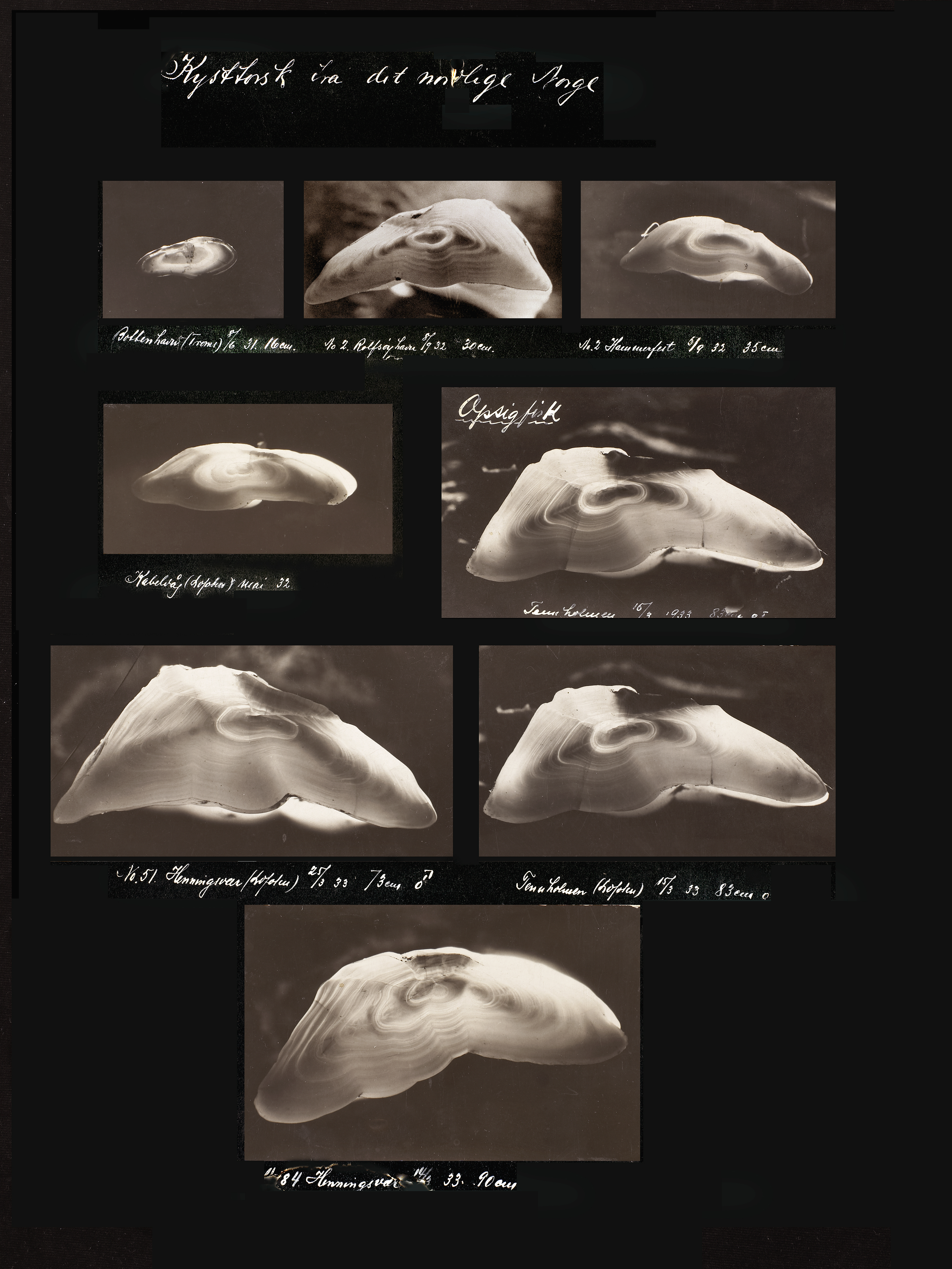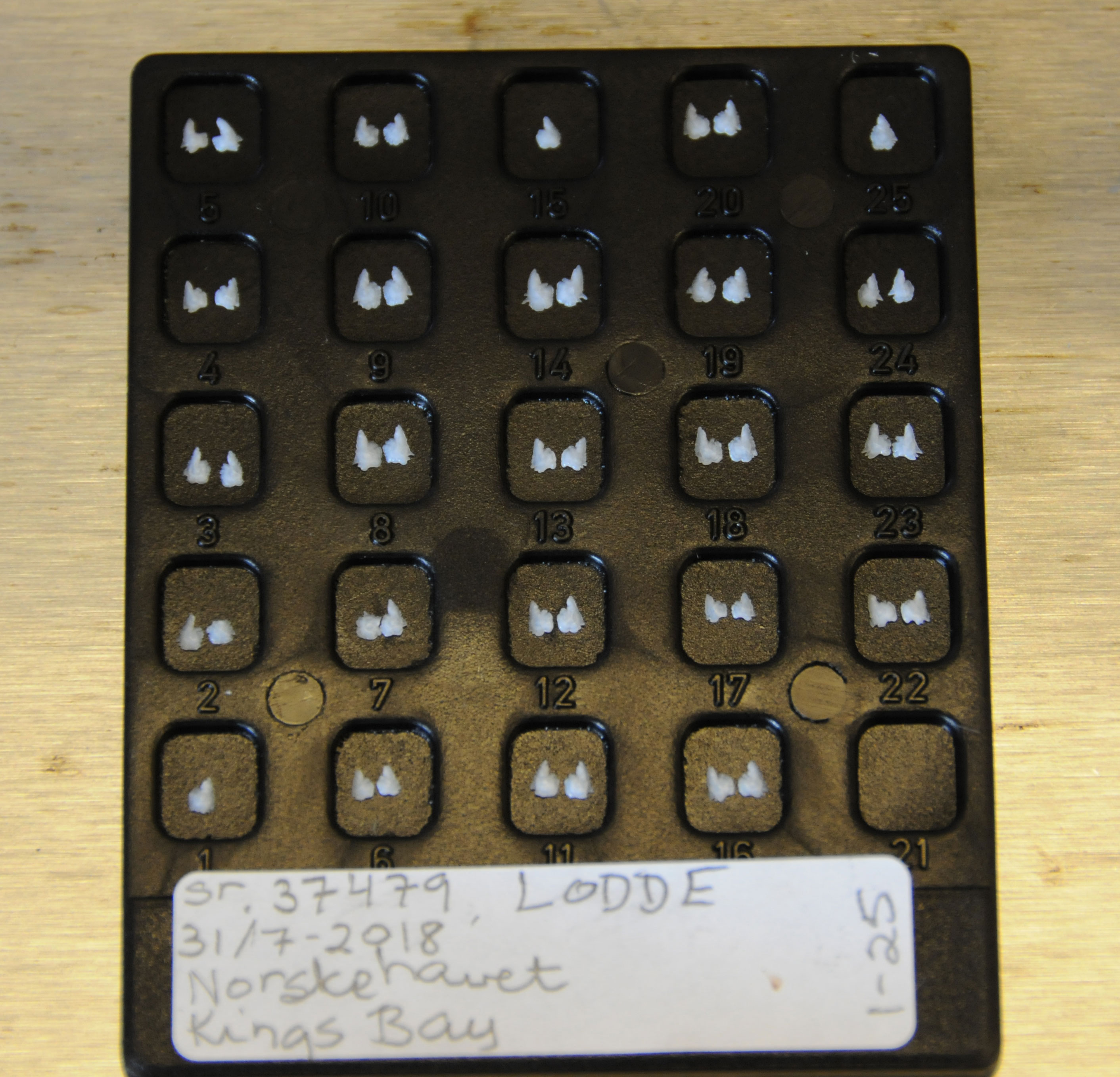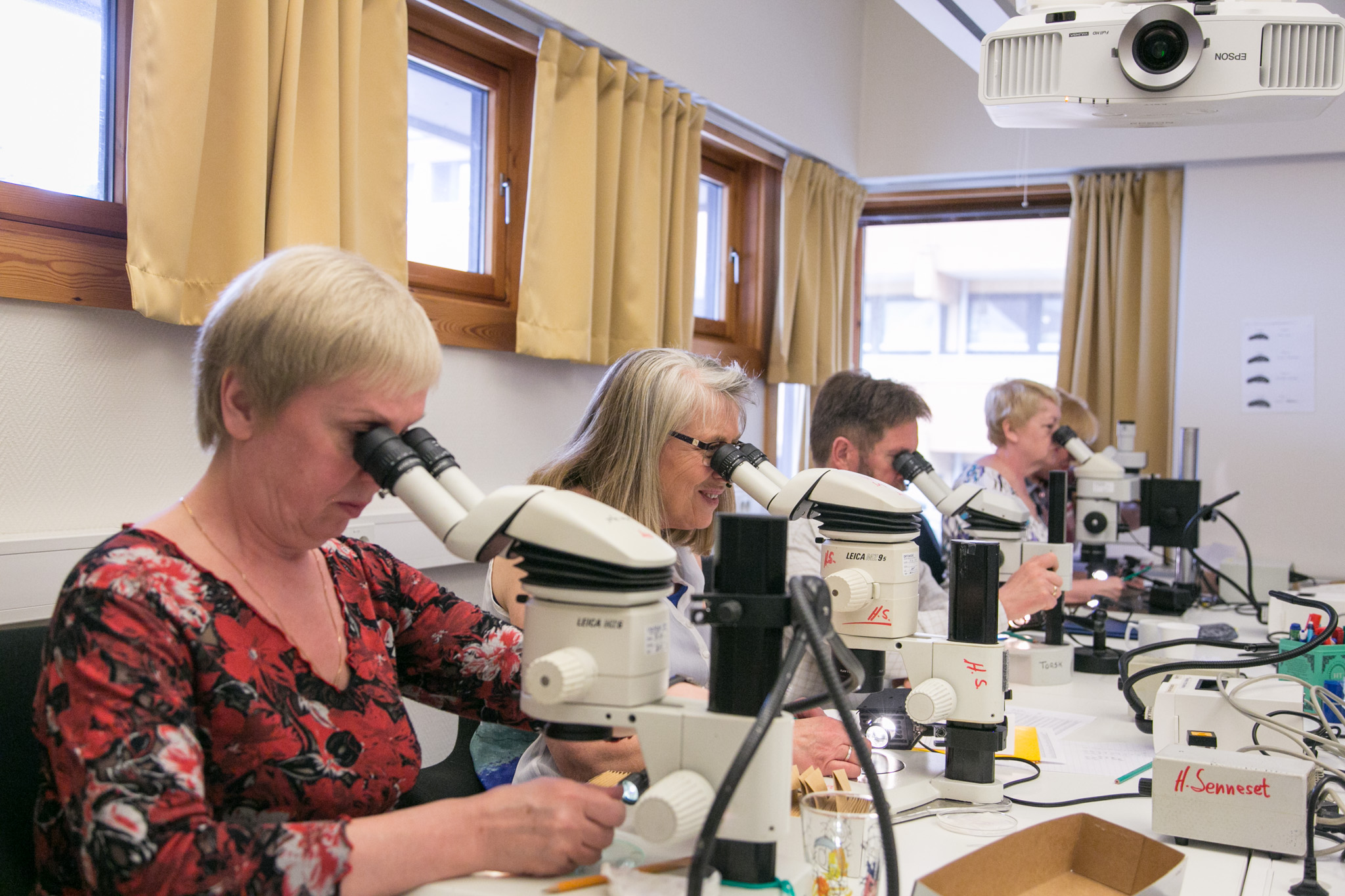Topic: Otoliths

Otolith from herring
Photo: Institute of Marine ResearchPublished: 15.10.2020 Updated: 26.10.2020
Gunnar Rollefsen (Director of the Institute of Marine Research from 1948 to 1969) was one of the pioneers in this field. He found that otoliths provided more precise information about the age of the cod, the time of maturation and the number of times it had spawned, than the fish shells researchers had used at the time. The photos Rollefsen took of different types of cod otoliths in 1933 are as good as if they have been taken today.

The age of the fish from the otoliths (and shells) is determined roughly in the same way as one reads the year rings on a tree, by counting individual rings. Cod that live near the ice edge has a short distance between the annual growth rings, while it grows faster in warmer water. Similarly, fish that have grown poorly due to low food, will have a shorter distance between the year rings than fish with access to more food, which grows faster. By measuring the distance between the rings, one can determine the size of the fish at different ages and calculate the growth.
Knowing the age of fish is crucial for the Institute of Marine Research. In total, approximately 100,000 otoliths/shells are read per year. Some of the work is done on board our research vessels, but most of the reading is done in our laboratories ashore.
The shapes and proportional sizes of the otoliths vary with fish species
For the demersal fish species (cod, haddock and saithe), approximately 50 000 otoliths are read per year. For cod we differ between coastal cod and Northeast Arctic cod (in the Barents Sea) and North Sea cod. In addition, whiting, pollack, Norway pout, sandeel and plaice are read, but not a large amounts of each species. We also read halibut and wrasse. The otoliths are read as it is, embedded, or cracked, cut or polished thin.
For pelagic species, otoliths are read from North Sea herring, sprat, capelin and mackerel. The otoliths from these species are very small and are therefore embedded into boards before reading. Other otoliths (including blue whiting and horse mackerel) are read whole, cracked, cut or polished thin. By using a cutting machine, we make cuts to be able to see the age better. For herring we also read day zones, then the otolith is polished thin to see them. For Norwegian spring-spawning herring and salmon, the age is read from shells.

Within deep sea species, age is read on golden redfish. beaked redfish, Greenland halibut, halibut, greater argentine, cartilage fish and seals. For age reading of the latter two, e.g. spikes from spurdog and teeth from seals are used. The samples are treated differently depending on species, e.g. staining, burning of otoliths and sawing/embedding with epoxy.
In 2017, we tried out a new method to prepare, photograph, mark zones and determine the age of redfish (beaked redfish and golden redfish). This could be the new standard for reading redfish-otoliths at the IMR.
Some of the otoliths are harder to interpret – this is especially true of fish with a long life expectancy, such as redfish, but also cod and haddock can be difficult, as they have many false zones that only a trained eye can consider whether or not they should be counted. Becoming a good age reader requires both long training and experience. Since Norway and Russia manage the same populations, the Institute of Marine Research and the Russian Institute of Marine Research PINRO/VNIRO annually exchange 400 cod and haddock otoliths for age reading. In addition, capelin is exchanged and collected with Russian age readers. Every two years, the age readers meet and discuss the otolith readings to come to an agreement on the most difficult ones.

These workshops are incredibly important for the quality of age reading of otoliths (especially from capelin, cod and haddock in the Barents Sea). We are attempting to achieve automatic imaging of otoliths (machine learning), but it will never be able to replace qualified and experienced age readers, as they notice changes in the otolith that happen over time. This is what a machine needs to be taught to understand.
International gatherings and workshops are also organized by ICES to compare age reading between the countries that provide data for assessments for the different species. This is important to ensure that everyone maintains a high standard in age reading and that everyone has the same understanding of the otolith's zonation.





